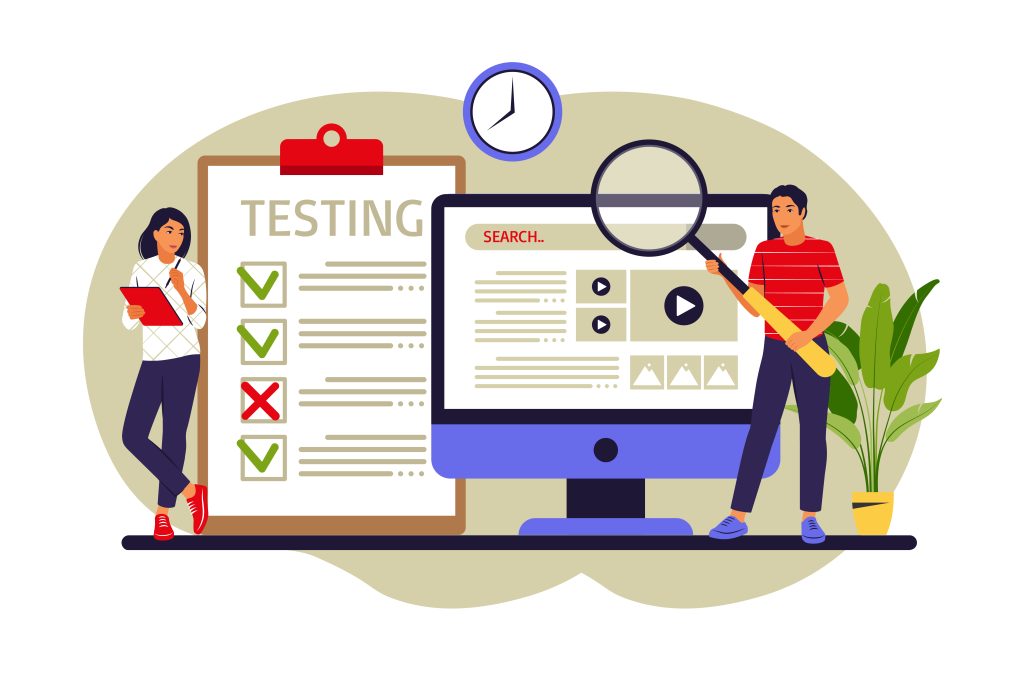A/B testing is a method that empowers marketers to fine-tune their strategies for maximum effectiveness. It involves comparing two different versions of a marketing element, such as an email, webpage, or ad, to ascertain which variant performs better in achieving specific goals.
A/B testing holds immense potential for optimizing campaigns and driving higher conversion rates. By meticulously examining the impact of variations in elements like subject lines, email content, calls-to-action, and visuals, marketers can glean invaluable insights into what resonates most with their audience.
A/B Testing: What and Why?
A/B testing takes center stage as a powerful tool to refine and enhance campaign performance. It enables marketers to send two distinct versions of an email to segmented subsets of their subscriber base, each version differing in a single, significant element.

The goal is to determine which version garners superior results in terms of metrics like open rates, click-through rates, and, ultimately, conversions. This data-driven approach allows marketers to make informed decisions, ensuring that every aspect of their email campaigns is meticulously crafted to engage recipients and drive them towards desired actions.
A fundamental aspect of A/B testing within email campaigns is the distribution of two unique email versions to randomly segmented sections of the same recipient list. The primary objective is to assess the influence of a singular modification, with subject lines often being the focal point, although this adjustment can encompass other facets of the email content.
Here’s an example.
Netflix’s Thumbnail Testing Example
Netflix, the popular streaming platform, has been known to utilize A/B testing extensively to improve user engagement and retention. They wanted to enhance the user experience by optimizing the thumbnails displayed for each TV show or movie.

Netflix conducted an A/B test where they randomly showed different thumbnails to different users for the same content. By analyzing user behaviour and engagement metrics, they aimed to identify which thumbnails were most effective in capturing viewers’ attention and enticing them to watch.
Through extensive testing, Netflix discovered that the choice of thumbnail significantly impacted the likelihood of users clicking and watching a particular title. They found that certain types of thumbnails, such as those featuring recognizable actors and eye-catching visuals, generally performed better in terms of attracting viewers.
Based on these insights, Netflix implemented the winning thumbnails site-wide, resulting in improved click-through rates, increased user engagement, and ultimately, higher viewer satisfaction.
This example highlights how A/B testing can be a valuable tool for online platforms like Netflix to optimize their user experience. By experimenting with different design elements, such as thumbnails, businesses can identify which options resonate best with their audience, leading to improved engagement and better overall performance.
Industry Insights
Before delving into the testing process, it’s enlightening to consider industry statistics. Only 17% of marketers harness the power of landing page A/B tests to enhance conversion rates. Moreover, Media and entertainment leads in form-fill conversions, while Catering and restaurants excel in click-through conversions on landing pages. This data emphasizes the need for meticulous testing, tailored to each industry’s unique dynamics.
Testing Process
A/B testing process allows you to determine which version performs better in terms of open rates, click-through rates, and overall conversions, helping you optimize your email campaigns for better results. Let’s understand a few points that we need to keep in mind for the testing process:

Define Clear Objectives
Start by identifying what you want to achieve with your email campaign. Is it increased open rates, click-through rates, conversions, or another metric? Clear objectives will help you design experiments with purpose.
Test One Element at a Time
To isolate the impact of specific changes, focus on testing one element at a time. This could be the subject line, sender name, email copy, CTA button, or design elements
Segment Your Audience
Segment your email list based on relevant criteria such as demographics, behaviour, or engagement levels. This allows you to tailor experiments to specific groups and get more targeted results.
Randomize and Control Variables
Ensure that your A/B test groups are randomly selected to reduce bias. Also, maintain consistency in other variables (like send time, list size, etc.) to accurately measure the impact of the tested element.
Sufficient Sample Size
Make sure you have a large enough sample size for your test to yield statistically significant results. The size will depend on your overall email list size and the level of difference you’re expecting.
Set a Time Frame
Define a specific period for your A/B test. This ensures that you’re evaluating performance over a consistent period and accounting for any time-dependent factors.
Monitor Results Carefully
Keep a close eye on the performance metrics you’re testing. Tools like email marketing platforms or analytics software can help track open rates, click-through rates, conversions, etc.
Statistical Significance
Ensure that your results are statistically significant. This means that the observed differences in performance between the two groups are unlikely to be due to chance.
Document and Learn
Keep detailed records of your experiments, including what you tested, the results, and any insights gained. Utilize this data to guide upcoming A/B tests.
Iterate and Optimize
Use the insights from your A/B tests to continually refine your email marketing strategy. Implement changes based on what you’ve learned and test again to keep improving.
Consider Multivariate Testing (MVT)
If you have the resources and a large enough audience, consider multivariate testing. This allows you to test multiple elements simultaneously to understand their combined impact.
Selecting Elements for Testing
The key to effective A/B testing lies in astute element selection. Focus on aspects directly impacting crucial metrics: open rates, click-through rates, and conversions. Elements like subject lines, email content, calls to action, and imagery are ripe for testing. Leverage existing data to identify underperforming areas, providing fertile ground for experimentation.
Crafting Effective Variations
When devising A/B test variations, striking a balance between significance and coherence is paramount. Changes should be impactful without bewildering or alienating your audience. For instance, when testing subject lines, consider nuanced alterations in tone or length rather than starkly different lines. Uphold quality and brand consistency in both versions.
Iterative Testing Process
Patience is key in A/B testing. Prepare for multiple rounds of experimentation before discerning substantial results. Don’t be disheartened if the initial test lacks a clear winner. Ongoing refinement of variations and testing will unveil invaluable patterns over time.
Subject Lines and Preview Text
The initial impression of an email hinges on subject lines and preview text. They wield profound influence over open rates, making them prime candidates for A/B testing.
Testing Subject Lines
Factors like length, tone, and urgency warrant careful consideration. Experiment with varying lengths to ascertain what resonates with your audience. Explore diverse tones, such as humor or urgency, to captivate your subscribers’ attention. Always ensure subject lines align with the email’s content.
Optimizing Preview Text
Positioned beneath the subject line, the preview text is equally critical. It should be captivating and a genuine reflection of the email’s content. Experiment with different lengths and approaches, such as using a summary, question, or teaser.
Conclusion
Subject lines and preview text emerge as pivotal focal points, shaping recipients’ initial response and significantly impacting open rates. Leveraging these insights, marketers can fine-tune their email campaigns, ultimately leading to higher engagement and improved conversion rates. With patience and persistence, A/B testing becomes a powerful means to continually enhance the effectiveness of email marketing efforts.
Unlock the power of email marketing by optimizing your strategy to increase engagement on various platforms. Visit our website now and click here to discover actionable insights and tips to enhance your email campaigns.
All images belong to their respective owners. Please email [email protected] if removal is required.




